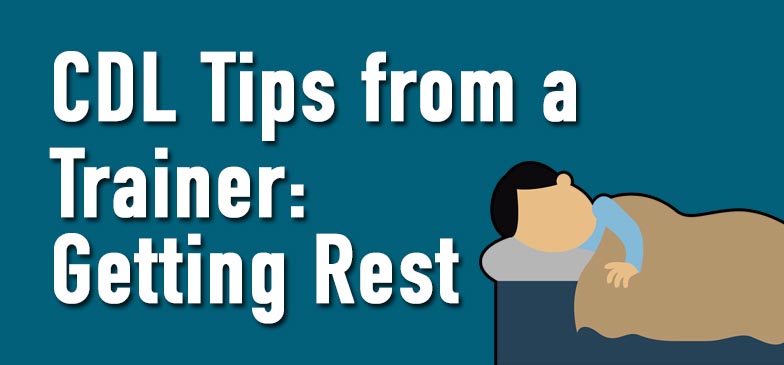CDL School Tips from a Trainer - Getting Rest
Our CDL school trainers are back at it again this week with another tip to help students and recent graduates get acclimated to the trucking industry.
This week, it’s all about one thing: getting your rest.
Don’t Get Caught Up in the Money
Don’t get caught up in just making money out on the road.
Yes, we all need to make money to survive. Yes, you can make up to $50,000 in just the first year as a truck driver. Yes, we realize that to be making money you need to be out on the road rolling.
But you have to realize that when you get started, it’s not all about the money. It’s about adjusting to a new lifestyle, and getting the experience you need to have a long-lasting career in the industry.
The money will come with the experience you gain. If you’re always worried about how much money you’re making or how many miles you’re getting, you’ll never get a chance to get the rest you need.
You cannot downplay or wave off the importance of getting adequate rest when it comes to any career, but it’s especially true when you decide to become a truck driver.
You’re in control of one of the most powerful machines in the world when you get behind the wheel of a semi, and being well-rested is key to your success, and safety on the road.
It’s Also the Law
On top of rest being good for you for various health reasons, the government also mandates you get a certain amount of rest depending on how long you drive. For example, the Federal Motor Carrier Safety Administration (FMCSA) and Department of Transportation (DOT) only allow you to drive up to 11 consecutive hours before having to take a 10 hour break
The federal government regulates how long drivers can run to help ensure your safety as well as other travelers on the road, not to limit how far you can drive or how much money you can earn. For more details about the Hours of Service regulations, check out the summary on the FMCSA website.
Facts and Stats to Note
Below are some sleep-related driving stats gathered by the National Sleep Foundation and Department of Transportation.
- According to the National Sleep Foundation’s 2000 Sleep in America poll, when they are driving drowsy, 42% of those polled become stressed, 32% become impatient, and 12% drove faster.
- The National Highway Traffic Safety Administration estimates that 100,000 crashes are a result of driver fatigue each year. In turn, it’s estimated that these crashes lead to 1,550 deaths, 71,000 injuries, and $12.5 billion in monetary losses.
- Sleep deprivation increases the risk of a sleep-related crash; the less a person sleeps, the higher the risk.
- “According to a study by the AAA Foundation for Traffic Safety, people who sleep six to seven hours a night are twice as likely to be involved in such a crash as those sleeping eight hours or more, while people sleeping less than 5 hours increased their risk four to five times."
- Reduced sleep leads drivers to develop chronic fatigue, and in turn slows reaction times and reduces their ability to make decisions quickly.
For more information and statistics on sleep related issues in driving, you can visit the Department of Transportation’s page here, or head on over to the National Sleep Foundation’s page here.
Start Your Trucking Career Now
Driver Solutions can help you get the CDL training you need to become a truck driver. Start your career now and you could be on the road making up to $50,000 in just the first year! Just take a few moments to complete our online driver application now.
